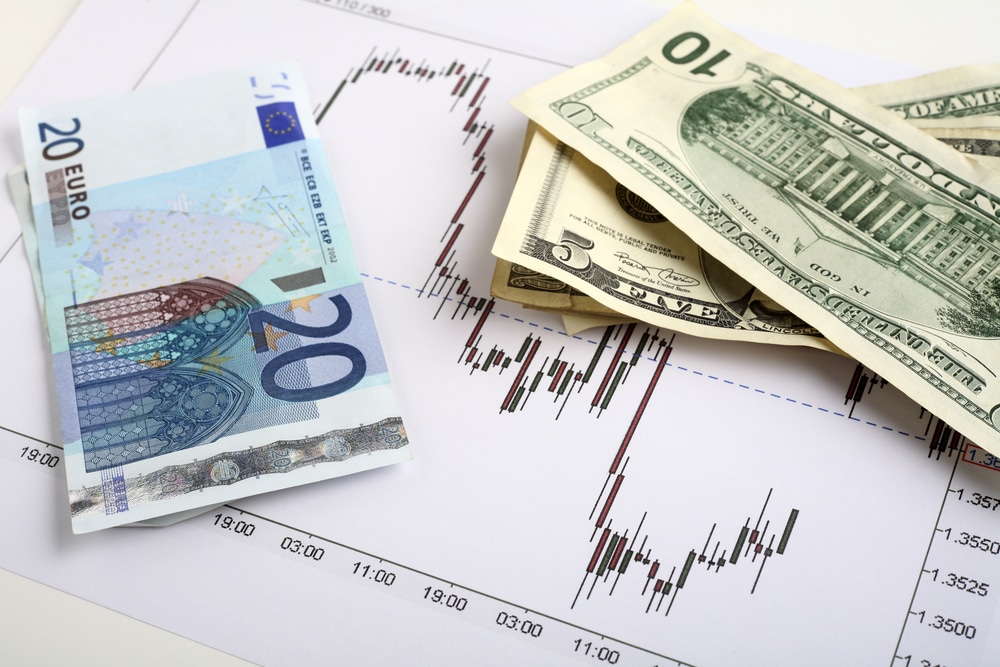
As with any other traded asset, shorting a currency is ideal when you believe that it is headed for depreciation in the future. However, you have to time your short position appropriately so that the market does not turn against you.
In the forex market, unlike the stock market, shorting does not imply borrowing the asset from your broker. Instead, it simply means selling it.
How does short-selling work in the FX market?
By design and nature of the currency market, shorting is inherently part of every forex transaction. This is because currencies are traded in pairs. Therefore even when you buy a currency, you have to sell the other, thereby shorting in the process. For every trade you make, you hope that one currency appreciates while the other depreciates.
As cited above, shorting in the FX market is substantially different from how it’s done in the FX market. This is because you do not borrow the trading instrument from your broker. In the stock market, you have to borrow stock from your broker, then sell them at their current market price and hope that the stock price depreciates. If the stock depreciates, the trader will profit because they will be bought back at a lower price, pay back the broker, and remain with the profit.
The approach to shorting in FX is different primarily because currencies are traded in pairs. This implies that there are two sides to each trade, regardless of whether you are selling or buying. When you sell the GBPJPY pair, for example, it means you are selling the British pound and buying the Japanese yen.
Therefore, you don’t have to borrow money from the broker. All you need to do is to understand the spreads, determine the size of your position and establish whether the market fundamentals have aligned in a way that will lead to depreciation of the currency you want to short.
When trading forex derivatives like CFDs and spread bets, you can go short on the market. When using these financial instruments, you’ll be given a price quotation in the form of an offer and a bid. Let’s take an instance where the USDJPY is currently at 110.2350, with the bid price at 110.2345 and the offer at 110.2345.
Assuming that you believe that the value of the pair will depreciate, you would go short with the price at 110.2350. Assuming the price drops, you’ll return a profit. The downside of selling short is that the price of the asset might theoretically continue to climb indefinitely. For this reason, you should use stops and limits to lower your risk exposure and lock in winnings.
Managing risk
Long positions carry less risk, but short sales have the potential for greater losses, as there is theoretically no limit to how much can be lost in the market. It’s critical to consider risk management to prepare for a short position.
Another danger is the occurrence of a short squeeze, which takes place when the market rises and short-sellers need to abandon their positions rapidly. In a squeeze, the price rises as more traders close their positions, causing more traders to sell.
Trading in the Forex market involves the use of short positions that need knowledge of the underlying currencies and their corresponding counter-currency.
Using currency indexes, you can see what currencies are increasing in value and which currencies are decreasing in value. One of the best tools to use in your market assessment is the Dollar Index (DXY), which weighs the strength of the USD relative to six major global currencies.
Stop-loss or limit orders are also very effective technical tools for covering short positions. In order to prevent further losses, a stop-loss order tells your broker to close a position in case the pair you bet against appreciates beyond a certain level.
Limit orders are used to lock in profits and close your position once the currency depreciates to a specified level. This is a safety measure in case the market reverses against you.
The effect of rollover
It’s important to keep in mind the rollover fees while you’re shorting the Forex market, as these might eat into your gains.
Because you’re selling one currency and buying the other to fund the position, you’ll have to pay interest on the currency you’re shorting. As a result, you’ll be paid interest on the financing currency.
If the shorted currency’s interest rate is higher than the funding currency’s, you’ll have to pay interest on the difference. The difference in interest rates will be paid to you if the shorted currency’s rate is lower than the funding currency.
In summary
Short selling allows you to bet on the decline of the value of an asset. Even the relatively stable currencies at times, on the other hand, can see their value move drastically. Investors who short currencies should be aware of any factors that could affect its strength and utilize risk-management measures to reduce any potential risks.








Leave a Reply